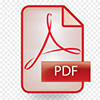How STEM Education Improves Student Learning
Review
STEM evolved from a need to develop classwork and curriculum for highly gifted mathematics students many of which took advance college-level courses in conjunction with high school studies. As these accelerated courses and the students that populated them demonstrate a new stratagem as the strength of STEM grew into mainstream K-12 and was seen as an opportunity for educator to offer advanced studies to talented but disadvantaged across a wide demographic setting the stage for formal recognition of the STEM movement in 1983. Author Meyrick (2011) proceeds to outline how STEM improves student learning with the implementation of national standards and relays the successes and concerns with STEM adoption. An important observation made by Meyrick (2011) recognizes that traditional teaching methods are not applicable to the instruction of STEM methodology. She advocates for professional development of educators to train teachers how to integrate STEM successfully into the curriculum. Although her articles focus on the STEM components, she also advocates for the importance of the arts, reading, and writing as key requirements for STEM students, and somewhat espouses the doctrine of STREAM modality.

Abstract
The intent of this article is to examine current taxonomies used to design and deliver Science, Technology, Engineering, and Mathematics (i.e., STEM) curriculum in an effort to attract a greater variety of students to the STEM field of study in the K-12 public school environment. I analyzed specific aspects of STEM-based programs to compare STEM education components to traditional college-preparatory methods of instruction, including looking for environmental practices that may attract female and first-generation college attendees toward developing a positive attitude toward attaining a STEM education. I also made connections between current instructional trends and their impact on student mastery
Meyrick, K. M. (2011). How STEM education improves student learning. Meridian K-12 School Computer Technologies Journal, 14(1), n.p.
